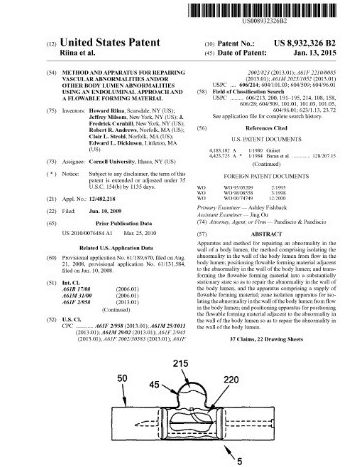MINT announces that a patent for our Injectable Mold (iMold) technology has been issued by the United States by The United States Patent and Trademark Office (USPTO). The patent, Nos. 8,932,326 B2, and titled “Method and apparatus for repairing vascular abnormalities and/or other body lumen abnormalities using an endoluminal approach and a flowable forming material” represents the first patent issued for a family of applications focused on the repair of vascular
abnormalities employing an injectable mold or cast.

These newly issued patents strengthen and support MINT’s strategy of establishing a robust patent portfolio to protect our technologies as we continue to advance the development process in the Cardiovascular and Gastrointestinal space. The MINT Program now has 4 issued United States Patents, 1 issued patent in Japan, and 22 patents pending in the US and world-
wide.
Unmet Clinical Need for iMold – There currently exists a very significant need to improve the endovascular repair of Abdominal Aortic Aneurysms (AAA) and tears to arteries due to trauma. Current endovascular repair of AAA is achieved by inserting a stent graft. These devices have had significant problems with migration and leaks and several AAA stent grafts have been removed from the market. There is a clear need for innovative approaches to treat these conditions with endovascular methods.
The iMold project builds on MINT’s Zone Isolation technology (patent pending), iMold will enable the endovascular repair of vascular pathology and trama (e.g. AAA, vascular tears, etc.) by coating the luminal surface of diseased or damaged vessels with strengthening material whilst maintaining distal perfusion. The iMold device enables clinicians to deliver strengthening material, which might include liquid Spider Silk, into a controlled region that is free of blood flow and resulting shear forces. The material can then cure over an extended period (i.e. potentially several hours) as the device maintains distal perfusion. After the strengthening material is cured, the iMold device is removed and the strengthening material is left in place, within the abnormality. The end result will be permanent isolation of the abnormality from the systematic circulation.

